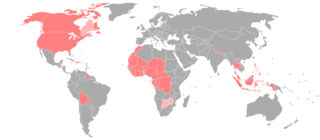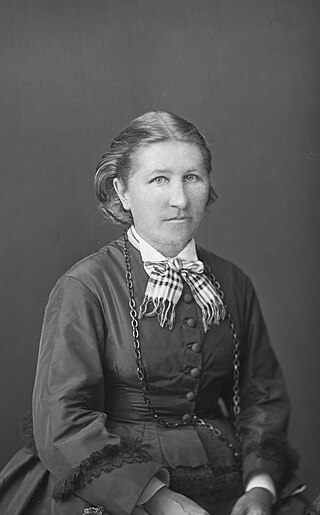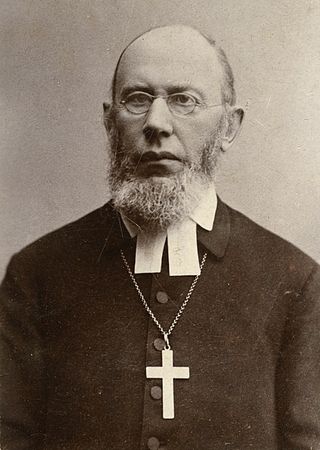Related Research Articles
Cued speech is a visual system of communication used with and among deaf or hard-of-hearing people. It is a phonemic-based system which makes traditionally spoken languages accessible by using a small number of handshapes, known as cues, in different locations near the mouth to convey spoken language in a visual format. The National Cued Speech Association defines cued speech as "a visual mode of communication that uses hand shapes and placements in combination with the mouth movements and speech to make the phonemes of spoken language look different from each other." It adds information about the phonology of the word that is not visible on the lips. This allows people with hearing or language difficulties to visually access the fundamental properties of language. It is now used with people with a variety of language, speech, communication, and learning needs. It is not a sign language such as American Sign Language (ASL), which is a separate language from English. Cued speech is considered a communication modality but can be used as a strategy to support auditory rehabilitation, speech articulation, and literacy development.

Irish Sign Language is the sign language of Ireland, used primarily in the Republic of Ireland. It is also used in Northern Ireland, alongside British Sign Language (BSL). Irish Sign Language is more closely related to French Sign Language (LSF) than to BSL, though it has influence from both languages. It has influenced sign languages in Australia and South Africa, and has little relation to either spoken Irish or English. ISL is unique among sign languages for having different gendered versions due to men and women being taught it at different schools all over Ireland.
Oralism is the education of deaf students through oral language by using lip reading, speech, and mimicking the mouth shapes and breathing patterns of speech. Oralism came into popular use in the United States around the late 1860s. In 1867, the Clarke School for the Deaf in Northampton, Massachusetts, was the first school to start teaching in this manner. Oralism and its contrast, manualism, manifest differently in deaf education and are a source of controversy for involved communities. Listening and Spoken Language, a technique for teaching deaf children that emphasizes the child's perception of auditory signals from hearing aids or cochlear implants, is how oralism continues on in the current day.
Icelandic Sign Language is the sign language of the deaf community in Iceland. It is based on Danish Sign Language; until 1910, deaf Icelandic people were sent to school in Denmark, but the languages have diverged since then. It is officially recognized by the state and regulated by a national committee.
Audism as described by deaf activists is a form of discrimination directed against deaf people, which may include those diagnosed as deaf from birth, or otherwise. Tom L. Humphries coined the term in his doctoral dissertation in 1975, but it did not start to catch on until Harlan Lane used it in his writing. Humphries originally applied audism to individual attitudes and practices; whereas Lane broadened the term to include oppression of deaf people.
Estonian Sign Language is the national sign language of Estonia.
Singapore Sign Language, or SgSL, is the native sign language used by the deaf and hard of hearing in Singapore, developed over six decades since the setting up of the first school for the Deaf in 1954. Since Singapore's independence in 1965, the Singapore deaf community has had to adapt to many linguistic changes. Today, the local deaf community recognises Singapore Sign Language (SgSL) as a reflection of Singapore's diverse culture. SgSL is influenced by Shanghainese Sign Language (SSL), American Sign Language (ASL), Signing Exact English (SEE-II) and locally developed signs.

Swedish Sign Language is the sign language used in Sweden. It is recognized by the Swedish government as the country's official sign language, and hearing parents of deaf individuals are entitled to access state-sponsored classes that facilitate their learning of SSL. Swedish sign language is strongly linked to the culture of Sweden. There are around 13.000 native speakers and a total of 30.000 speakers.
The Japanese Sign Language (JSL) family is a language family of three sign languages:

Finland-Swedish Sign Language (FinSSL) is a moribund sign language in Finland. It is now used only in private settings by older adults who attended the only Swedish school for the deaf in Finland, which was established in the mid-19th century by Carl Oscar Malm but closed in 1993. Some 90 persons have it as their native language. FinSSL is said to be a distinct language; however, "Finland-Swedish Deaf have few problems understanding Finnish signers". There had been, moreover, continuous input from Swedish Sign Language over its history.
Deaf Education in Kenya is a constantly changing section of the Kenyan education system that is focused on educating deaf, hard-of-hearing, and hearing-impaired Kenyan students. There are many organizations in Kenya made to protect the rights of Deaf Kenyans and promote progress in deaf education. The state of Kenyan deaf education is constantly changing and improving.

American Sign Language (ASL) developed in the United States, starting as a blend of local sign languages and French Sign Language (FSL). Local varieties have developed in many countries, but there is little research on which should be considered dialects of ASL and which have diverged to the point of being distinct languages.

The Deaf rights movement encompasses a series of social movements within the disability rights and cultural diversity movements that encourages deaf and hard of hearing to push society to adopt a position of equal respect for them. Acknowledging that those who were Deaf or hard of hearing had rights to obtain the same things as those hearing lead this movement. Establishing an educational system to teach those with Deafness was one of the first accomplishments of this movement. Sign language, as well as cochlear implants, has also had an extensive impact on the Deaf community. These have all been aspects that have paved the way for those with Deafness, which began with the Deaf Rights movement.

Harriet Burbank Rogers was an American educator, a pioneer in the oral method of instruction of the deaf. She was the first director of Clarke School for the Deaf, the first U.S. institution to teach the deaf by articulation and lip reading rather than by signing. Her advocacy for oralist instruction children increased utilization of oral-only communication models in many American schools.
Liisa Kauppinen is a Finnish human rights activist who lost her hearing as a child. After serving as executive director of the Finnish Association of the Deaf, in 1995 she became the first woman to be appointed President of the World Federation of the Deaf. She has contributed internationally to opportunities for women with disabilities while promoting the use of sign languages in connection with the Convention on the Rights of Persons with Disabilities. In 2013, she was awarded the United Nations Human Rights Prize, the first Finn to receive the award. In 2015 the WFD established the Dr. Liisa Kauppinen Fund to honour her contributions and to fund activities focused on the empowerment of deaf girls and women. In 2019 she was the recipient of a lifetime achievement award from the Light of the World Group.

Anna Charlotta Heikel was a Finland-Swedish teacher and director of the School for the Deaf in Jakobstad, Finland, from 1878 to 1898. She was a temperance activist as well as a pioneer of the Baptist movement in Finland and early Sunday school founder.

Carl Henrik Alopaeus was a Finnish Lutheran bishop and educator, known as the "apostle to the Deaf" due to his work in deaf education.

Carl Oscar Malm, also known as C. O. Malm and Carl Oskar Malm was Finland's first teacher of the deaf, founder of the first school for the deaf in the country, and the father of Finnish Sign Language.

Ossian Edmund Borg was a Swedish teacher of the deaf and head of the Manillaskolan school for the deaf. He was the son of Pär Aron Borg, pioneer of deaf schooling in Sweden.
The history of deafness in Iceland includes the history of Icelandic Sign Language (ISL) and its status as the first language of the Deaf, the history of Icelandic Deaf education and Deaf organizations, and the status of hearing screenings in the country.
References
- ↑ Finnish Sign Language at Ethnologue (18th ed., 2015) (subscription required)
- ↑ Finnish Sign Language at Ethnologue (17th ed., 2013)

- ↑ Salmi, Eeva; Laakso, Mikko (2005). "Helsingin kokous". Maahan lämpimään, Suomen viittomakielisten historia. Kuurojen Liitto ry. p. 152. ISBN 952-5396-30-4.
- ↑ "Kuurojen historia" (in Finnish). Viittomakielisen opetuksen portti. Archived from the original on 27 September 2007. Retrieved 9 June 2008.
- ↑ https://www.jyu.fi/hytk/fi/laitokset/kivi/opiskelu/oppiaineet/viittomakieli Archived 2020-11-01 at the Wayback Machine Jyväskylän yliopisto, kielten laitos, suomalainen viittomakieli
- ↑ https://www.jyu.fi/edupsy/fi/laitokset/okl/opiskelu/luokanopettajakoulutus
- ↑ https://nettiopsu.utu.fi/opas/opintoKokonaisuus.htm?rid=12935&uiLang=fi&lang=fi&lvv=2012 Archived 2017-02-07 at the Wayback Machine Turun yliopiston humanistisen tiedekunnan opinto-opas
- ↑ "Viittomakieli ammattina". Kuurojen Liitto. Archived from the original on 27 September 2007. Retrieved 9 June 2008.
- ↑ "Viittomakielen opiskelu". Kuurojen Liitto. Retrieved 13 June 2020.